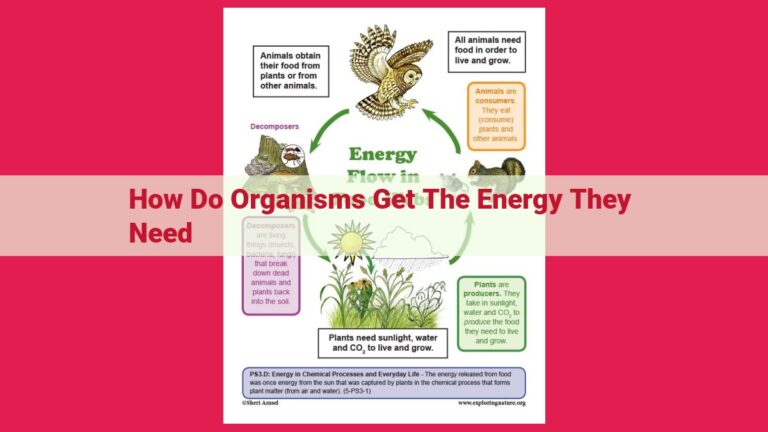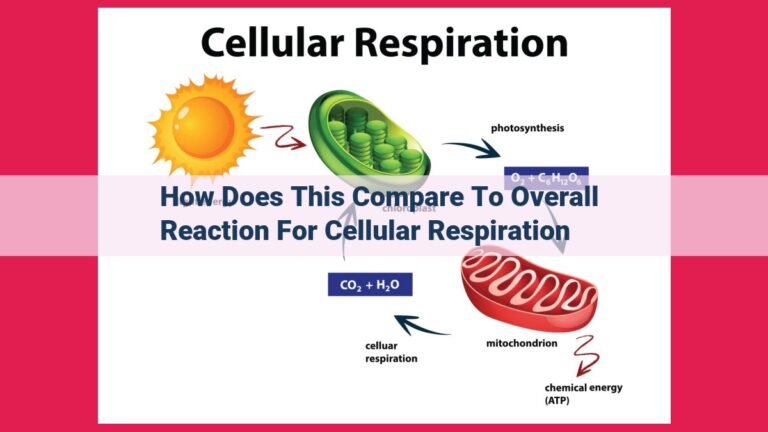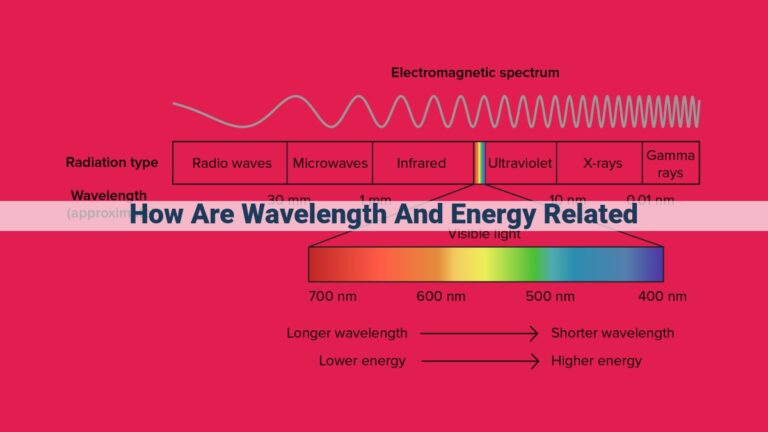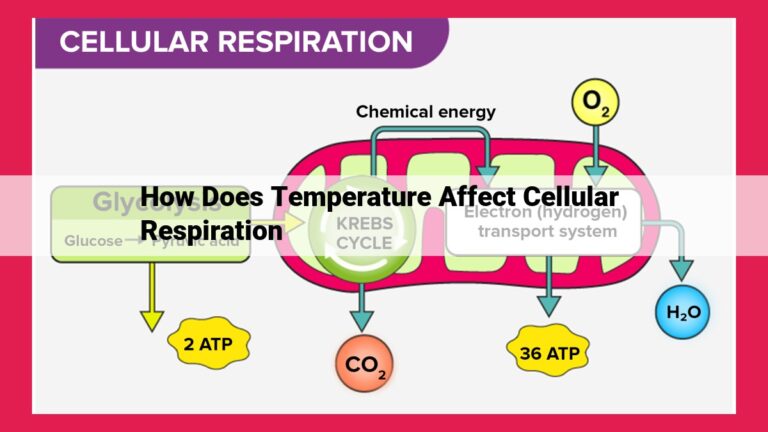The Intertwined Symphony Of Photosynthesis And Cellular Respiration: Key Insights And Their Impact On Life
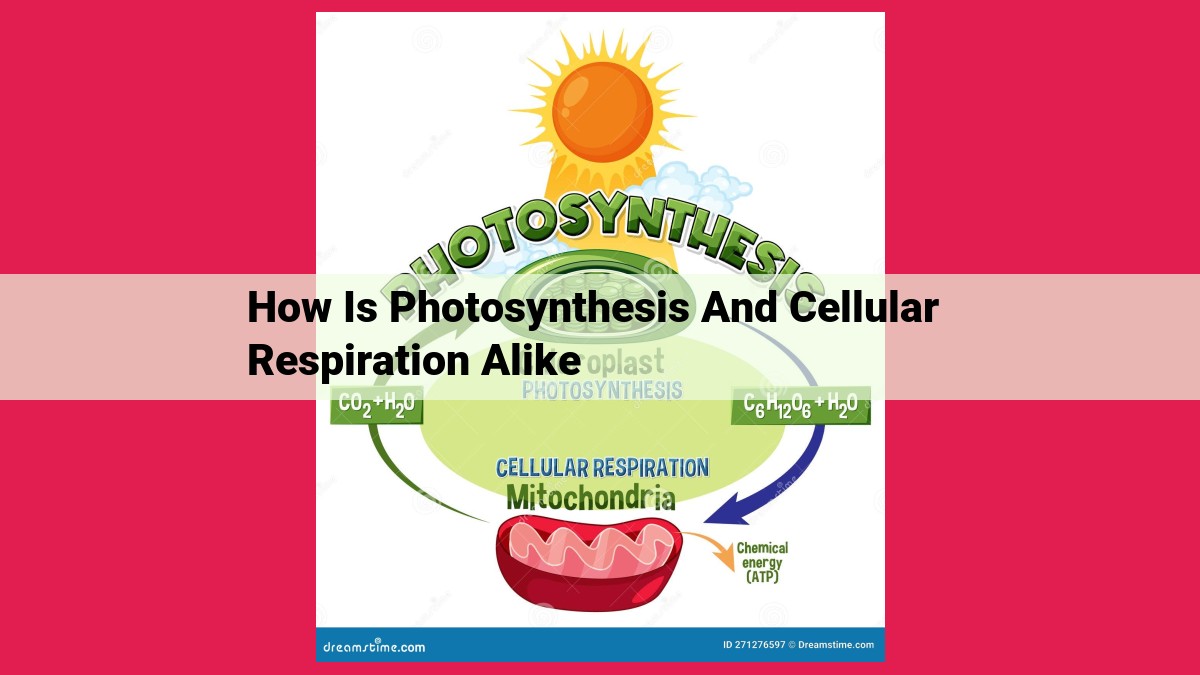
Photosynthesis and cellular respiration share fundamental similarities: they both involve gas exchange (CO2 and O2), utilization of enzymes, and energy conversion. Photosynthesis captures light energy, converting it into glucose, while respiration releases energy from glucose in the form of ATP. These two processes collaborate to sustain life: photosynthesis provides the food and oxygen necessary for respiration, while respiration generates the energy for cellular activities.
The Intimate Dance of Life: Photosynthesis and Cellular Respiration
In the symphony of life, photosynthesis and cellular respiration play a duet that sustains the very fabric of existence. These two processes, intricately connected, form a symbiotic dance that provides the food, oxygen, and energy that drive the tapestry of life on Earth.
Photosynthesis: Nature’s Alchemy
At the heart of photosynthesis lies a remarkable transformation. Green plants, like skilled alchemists, harness the sun’s radiant energy to convert carbon dioxide and water into the life-giving molecule, glucose. This process not only nourishes plants but also releases oxygen into the atmosphere, giving breath to all living creatures.
Cellular Respiration: Fueling Life’s Functions
Cellular respiration is the counterpart to photosynthesis, taking the glucose created in plants and converting it into adenosine triphosphate (ATP), the universal fuel for cellular processes. Through a series of intricate chemical reactions, respiration extracts energy from glucose, powering everything from muscle contractions to the intricate workings of our brain.
The Exchange of Life’s Gases
The interconnected nature of these processes is evident in the exchange of gases. Photosynthesis consumes carbon dioxide and releases oxygen, while cellular respiration reverses the process, consuming oxygen and releasing carbon dioxide. This dance of gases maintains a delicate balance in the atmosphere, ensuring a steady supply of life-sustaining oxygen and regulating the levels of greenhouse gases.
Enzymes: Nature’s Catalysts
Facilitating this intricate interplay are enzymes, the molecular maestros of biological reactions. Specific enzymes, like keys fitting into locks, enable the chemical reactions of photosynthesis and respiration to proceed efficiently, ensuring a continuous flow of energy and nutrients.
Sustaining Life’s Symphony
Photosynthesis and cellular respiration are essential cogs in the machinery of life, providing the sustenance and energy that power the myriad biological processes. From the smallest microbe to the towering sequoia, these processes orchestrate the rhythm of life, ensuring the intricate balance and harmony of our planet.
Photosynthesis and Cellular Respiration: A Dance of Life’s Essential Gases
In the intricate tapestry of life, two fundamental processes, photosynthesis and cellular respiration, play a harmonious dance, orchestrating the delicate balance of our planet’s life-sustaining gases. Photosynthesis, the lifeblood of plant life, harnesses the sun’s rays to transform carbon dioxide and water into glucose, the building blocks of life. Simultaneously, cellular respiration, a tireless worker in our cells, breaks down glucose, releasing energy to power the countless biochemical reactions that keep us alive.
Throughout this intricate symphony of life, carbon dioxide and oxygen play crucial roles. As plants inhale carbon dioxide during photosynthesis, they release the life-giving oxygen we breathe. This oxygen then fuels cellular respiration, which in turn releases carbon dioxide back into the atmosphere. This continuous cycle of gases is essential for maintaining the delicate equilibrium of Earth’s atmosphere.
Beyond their vital role in gas exchange, carbon dioxide and oxygen also contribute to the stability of our ecosystems. Carbon dioxide helps regulate global temperatures, acting as a blanket that traps heat. Oxygen, on the other hand, supports the vast diversity of life on our planet, allowing organisms to thrive in a range of environments. By maintaining a balanced exchange of these gases, photosynthesis and cellular respiration ensure the health and sustainability of our planet.
Enzymes: The Master Keys to Life’s Reactions
Enzymes are the unsung heroes of the biological world. They are proteins that act as catalysts, speeding up chemical reactions without being consumed in the process. This remarkable ability makes enzymes essential for life as we know it.
Photosynthesis: The Light Factory
In photosynthesis, enzymes play a crucial role in converting light energy into chemical energy stored in glucose. One key enzyme, rubisco, binds to carbon dioxide and initiates the reactions that lead to glucose production.
Cellular Respiration: The Power Plant
Cellular respiration is the process by which cells convert glucose into energy. Enzymes are again essential players, breaking down glucose and transferring the released energy to a molecule called ATP. ATP is the universal energy currency of cells, providing the power for various cellular processes, including muscle contraction, nerve impulse transmission, and protein synthesis.
Specificity: A Mastermind’s Precision
Enzymes are highly specific in their actions. Each enzyme has a unique active site that binds only to specific molecules. This specificity ensures that enzymes only catalyze the reactions they are intended for, preventing unwanted side reactions.
Interdependency: A Life-Sustaining Dance
The processes of photosynthesis and cellular respiration are interconnected by enzymes. Photosynthesis provides the glucose that is respired by cells, and respiration releases the carbon dioxide that is used in photosynthesis. This symbiotic relationship is a testament to the incredible complexity and interdependence of life’s processes.
Transfer of Energy: The Power Source
In the intricate tapestry of life, two fundamental processes, photosynthesis and cellular respiration, dance in perfect harmony, ensuring the uninterrupted flow of energy that sustains all living organisms.
Photosynthesis: Converting Light into Life
Like a symphony of nature, photosynthesis orchestrates the magical transformation of sunlight into chemical energy. Chloroplasts, the minuscule green powerhouses within plant cells, capture the brilliance of the sun’s rays and harness it to assemble glucose. This precious sugar molecule serves as both a nutritional building block and a reservoir of stored energy.
Cellular Respiration: Unleashing Energy from Glucose
Cellular respiration plays the role of a conductor in this energy symphony. Within the cells of every living creature, this vital process breaks down glucose to release its captive energy. Like a skilled surgeon, respiration slices and dices glucose, liberating high-energy electrons in the process. These electrons are then funneled into the electron transport chain, a series of protein complexes that act as tiny turbines, spinning and generating precious ATP molecules.
ATP: The Cellular Currency of Energy
ATP (adenosine triphosphate) is the universal currency of energy in all living cells. It acts as a portable power source, carrying energy to fuel countless cellular activities, from muscle contractions to nerve impulses. Respiration ensures an uninterrupted supply of ATP, empowering cells with the energy they need to thrive.
The Vital Symbiosis: Photosynthesis and Respiration, Life’s Essential Partners
In the grand tapestry of life, two processes stand out as indispensable partners: photosynthesis and cellular respiration. These intricate dances of nature sustain the very essence of existence, providing the nourishment and energy that drive the myriad forms of life on Earth.
Photosynthesis: The Life-Giving Process
Photosynthesis, a marvel of nature, harnesses the sun’s radiant energy to transform carbon dioxide and water into glucose, the building block of life. This intricate process occurs within the chloroplasts of plant cells, where chlorophyll molecules act as energy-capturing antennae. The energy captured is then used to split water molecules, releasing oxygen into the atmosphere. Alongside oxygen, the byproduct of photosynthesis, glucose serves as a vital source of energy for all living organisms.
Respiration: The Energy-Releasing Process
Complementing photosynthesis, respiration plays a crucial role in providing cells with the energy they need to thrive. Through a series of intricate chemical reactions, respiration breaks down glucose, releasing the energy stored within its bonds. This energy is then captured in the form of ATP (adenosine triphosphate), the cell’s primary energy currency. ATP fuels the vast array of cellular processes that sustain life, from muscle contraction to nerve transmission.
A Symbiotic Partnership
Photosynthesis and respiration form a seamless symbiotic relationship. Photosynthesis provides the oxygen and glucose used by respiration, while respiration releases the carbon dioxide necessary for photosynthesis. This intricate cycle ensures a constant supply of the raw materials needed for both processes. Moreover, the energy released by respiration powers the active transport of molecules across cell membranes, a crucial process for nutrient uptake and waste removal.
The partnership between photosynthesis and cellular respiration is the lifeblood of our planet. Together, they create the oxygen-rich atmosphere we breathe, provide the food we eat, and generate the energy that fuels all living processes. Without these two interconnected wonders of nature, life as we know it would simply not exist. By understanding and appreciating their vital contributions, we not only pay homage to these extraordinary processes but also gain a deeper connection to the interconnectedness of all life on Earth.
